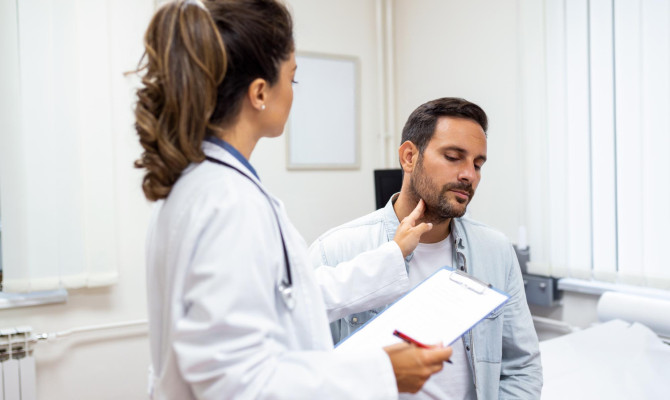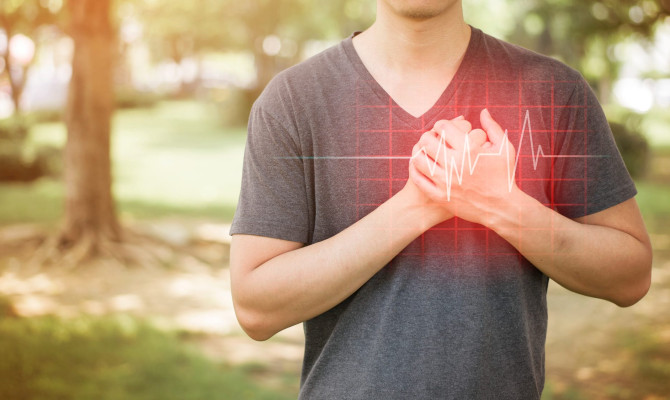Abrasion : Symptoms, Causes, and Management

- Abrasion
- 16 Aug 2023
Overview
What is abrasion ?
Abrasion, graze, or scrape is a rupture in the tissue’s continuity and are open, superficial wound on the outer layer of skin or organ linings of the body. It might be the result of scraping or rubbing. They most frequently occur on the elbows, head, torso, shin, knees, and ankles. It’s a relatively common injury. Road rash injuries are abrasions brought on by scrapes sustained in an accident. 1Overview | Researched based study from Uwhealth.org Abrasions are the most uncomplicated wounds to heal because most injuries are limited to the skin and cause minor bleeding at most. Since many of the skin’s nerve endings are exposed, abrasions can be painful.

Types
Types of Abrasion
There are three different types
Linear or Scratch Abrasion
- Caused by the skin being subjected to a tangential force, damaging the epidermis.2Types | Researched based study from Nlm.nih.gov
Brush or Grazed Abrasion
- The outer layer of the skin gets damaged if a person’s body gets dragged on a rough surface. For instance, playground injuries and highway accidents.2Types | Researched based study from Nlm.nih.gov
Patterned Abrasion
An impression is created on the skin when a perpendicular force to the outer layer of the skin is applied. Patterned abrasion can be of two types, namely:
- Pressure abrasion -Develops after prolonged skin compression like teeth bite, hanging, and strangling.
- Impact abrasion -Happens when the skin is struck with a powerful, quick blow, causing the skin to bulge and become damaged. 2Types | Researched based study from Nlm.nih.gov
Grading
Grades of Abrasion
The majority of them are minor abrasions and can get treated at home. But some scrapes can require medical attention.
- First-degree abrasions – are minor abrasions that only affect the top layer of the skin and won’t bleed.
- Second-degree abrasion – causes damage to the outermost layer and the second layer under it and can occasionally bleed.
- Third-degree abrasion – an avulsion that involves friction to the skin and underlying tissues. It is a severe abrasion that could bleed significantly and require more medical attention. 3Grading | Researched based study from Accidentclaimsadvice.org
Symptoms
What are the signs and symptoms of abrasion ?
Abrasion injury symptoms could include:
- Pain.
- Redness.
- Rash (resembling a strawberry or raspberry)
- Swelling.
- Warmth.
- Burning or stinging sensation.
- Minor to severe bleeding.
- Dirt, dust, sand, or gravel in the injury.
- Swollen lymph node.
Causes
Common causes of abrasion
The following are some of the causes of abrasion:
- Falls among children.
- Sports-related injuries.
- Road traffic accidents.
- A bicycle spoke injury. 4Causes | Researched based study from Sagepub.com
- Falls that occur as people age.
- Intentional harm (sexual and physical abuse) .
Prevention
Preventing abrasions
The following steps can prevent unintentional abrasions:
- When riding a motorcycle, wear safety gear like a helmet and shoes.
- When playing sports, wear shoes and appropriate attire, and use knee and elbow pads as protection.
- Prevent traffic accidents by enforcing government traffic speed limits.
- Check eyesight and stability regularly in older adults to avoid injury from frequent falls.
Evaluation
Evaluating the abrasions
The doctor may ask how the accident occurred, examine the affected area, and, if necessary, suggest a few tests.
Physical examination
- Inspect the site of injury.
- Look for foreign objects like sand, grit, or dust on the wound.
- Check the lymph nodes close to the injury.
- Additionally, look for fever or any related joint soreness.
In medico-legal examinations, the abrasion site is more crucial and may be significant evidence.
- There may have been an attempted homicide if there were injuries above the neck.
- Injuries to the thighs and genitalia, on the other hand, could indicate a sexual assault. 1Evaluation| Researched based study from Uwhealth.org
Blood tests
- Complete blood counts (CBC).
- Clotting tests if there is continuous bleeding.
Imaging tests
- X-rays to determine whether a bone fracture exists underneath and how deep the abrasion appears to be.1Evaluation| Researched based study from Uwhealth.org
- Look for radiopaque foreign substances as well.
Biopsy
- An abrasion biopsy may be necessary for medico-legal issues. 1Evaluation| Researched based study from Uwhealth.org
Management

Management of abrasions
Mild abrasions typically recover with first aid alone in two weeks. Rarely, some scrapes could require medical attention.
First aid
A person may prevent infections and encourage healing by taking the following steps:
- Wash both hands thoroughly before contacting the injured area.
- Rinse the wounded area under running water to clean and decrease the chance of infection.
- Use soap to wash the area around the wound. Avoid irritating substances like iodine and hydrogen peroxide.
- Stop the bleeding by elevating the wound area and, if necessary, apply mild pressure with a new bandage or cloth.
- Use tweezers dipped in alcohol to remove any debris. Get medical help if unable to clean the wound thoroughly.
- Receive a tetanus shot if the wound is large or unclean.
- Smear an antibiotic ointment to the affected area to keep it moist and to avoid scarring.
- Cover the wound with a bandage or rolled gauze to keep it clean and protected from environmental exposure.
- Leave the wound open if it is only a little scrape or scratch.
- As the injured region recovers, refrain from picking at it. 5Management| Researched based study from Mayoclinic.org
- Replace the dressing daily or when the bandage is soiled or dirty.
- Consult a doctor for any infection signs like redness, increased pain, discharge, warmth, or swelling on the skin near the injured site.
Medical management
If the abrasion injury is extensive, has trouble stopping the bleeding, or displays signs of infection, it needs medical intervention.
- Pain medication – like acetaminophen or ibuprofen, helps the patient deal with the pain from injury. 2Management| Researched based study from Nlm.nih.gov
- Antibiotics – may be administered if there is an infection or a significant disease risk.
- Tetanus shot – given if the injury is contaminated or if the individual receiving treatment hasn’t had one in a very long time.
- Numbing – the doctor may numb the injured region to ease the pain while cleaning or treating it.
- Debridement – to clear the wound of any debris, the doctor may use saline solutions.
- Topical antibiotics – like neomycin or bacitracin, may prevent infection and keep the region moist.
- Topical analgesics – used to relieve pain in minor abrasions. However, for severe injuries, doctors use systemic pain medications.
- Dressing the wound – Keeps it moist and avoids drying out.
- Injections of corticosteroids – administered to patients at risk for developing keloid or hypertrophic scars.
Healing
Factors affecting healing
Several variables can affect how quickly a wound heals in different people and may include the following:
- As a person ages, their skin repairs a little more slowly than it does when they are younger.
- Older males heal wounds more slowly than older females. 6Healing| Researched based study from Nlm.nih.gov
- Psychological stress like anxiety and depression could impede the healing process.
- Chronic problems like diabetes, cardiovascular disease, and cancer can delay causing healing.
- Medications such as glucocorticoids, NSAIDs (nonsteroidal anti-inflammatory medications), and chemotherapy may impair wound healing.
- Local infection at the injury site may impair wound healing.
- Consuming alcohol hinders the healing of wounds.
- Smoking can put off the healing of a wound.
- Malnutrition and malabsorption may cause delayed healing.
Complications
Complications associated with abrasion
Abrasions are often tiny wounds that heal without leaving any visible scars within two weeks. Deeper abrasions, however, may result in the following complications:
- Infection of the wound.
- Formation of scars.
- Irritated skin.
- Prolonged bleeding.
- Pus discharge.
- Discharge that smells foul.
- Injury that is not healing.
- A fever more than four hours.
- A lump in the groin or armpit that is firm and painful.
- Keloid formation, particularly on shoulders and chest.
- Tetanus infection. 7Complications| Researched based study from Cdc.gov
- Cellulitis. 8Complications| Researched based study from Cdc.gov
Outlook
Outlook
The majority of abrasions usually heal without infection or scars. Infections and scarring from extensive abrasions can be avoided by regularly cleaning and treating the wound. A scab that resembles crust will develop over the injury as it heals. This crusty layer is an ordinary sign of healing. Avoid picking the scab, as it will automatically come off. Abrasions on the face are more dangerous since they have a higher chance of scarring, and to prevent that, people should get them cleaned, debrided, and appropriately treated.
Any feedback on this article?
 This Articles content was accurate
This Articles content was accurate Very Informative Article
Very Informative Article I have a question or a comment
I have a question or a comment
 This article contains inaccurate content
This article contains inaccurate content This article was not helpful
This article was not helpful I have a question or a comment
I have a question or a comment
We appreciate your helpful feedback!
Checkout our social pages
References
-
UW Health
Care of Road Rash and Abrasions | Overview | Evaluation
-
National Library of Medicine
Abrasion | Types
-
Accident Claims Advice
What is an abrasion injury ? | Grading
-
SAGE Publications
Bicycle-spoke injuries of the foot in children | Causes
-
Mayo Clinic
Cuts and scrapes: First aid | Management
-
National Library of Medicine
Factors Affecting Wound Healing | Healing
-
Centers for Disease Control and Prevention
Tetanus-Causes and How It Spreads | Complications
-
Centers for Disease Control and Prevention
Cellulitis: All You Need to Know | Complications




































